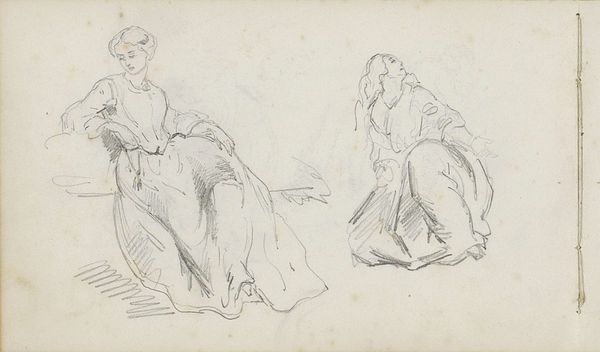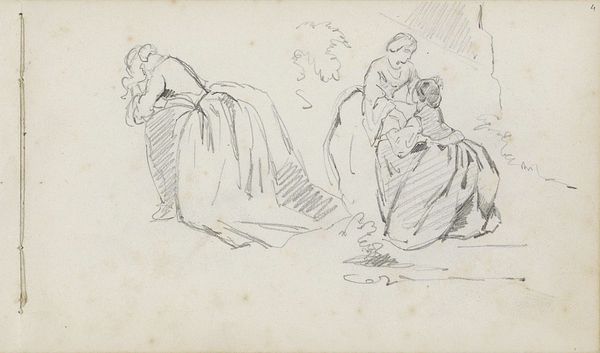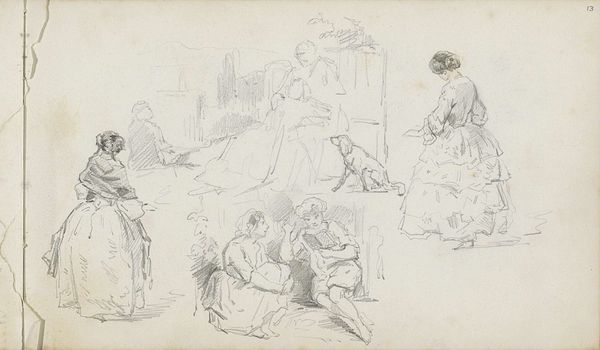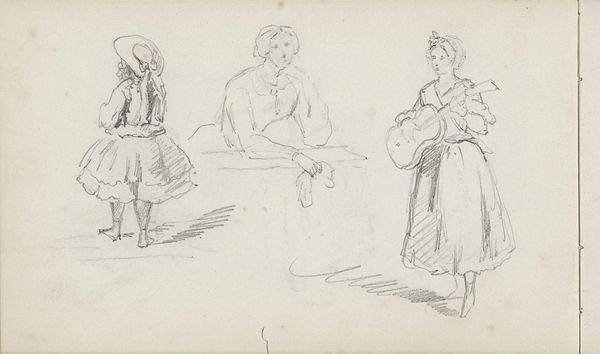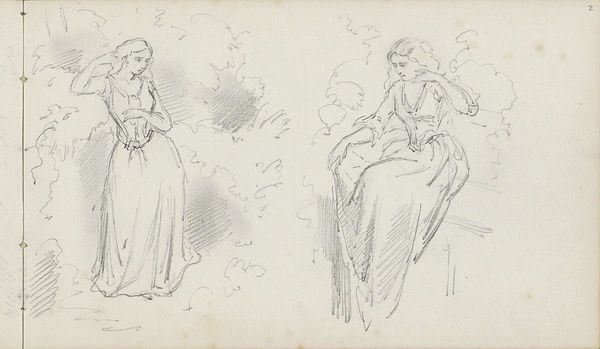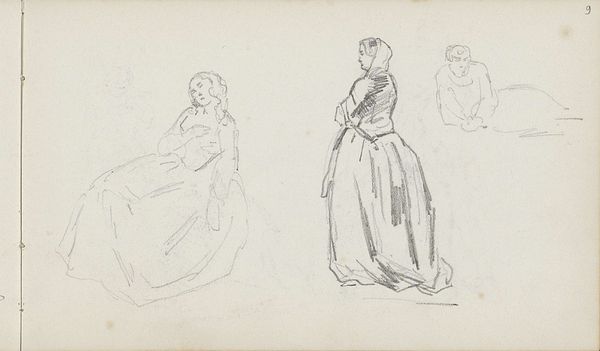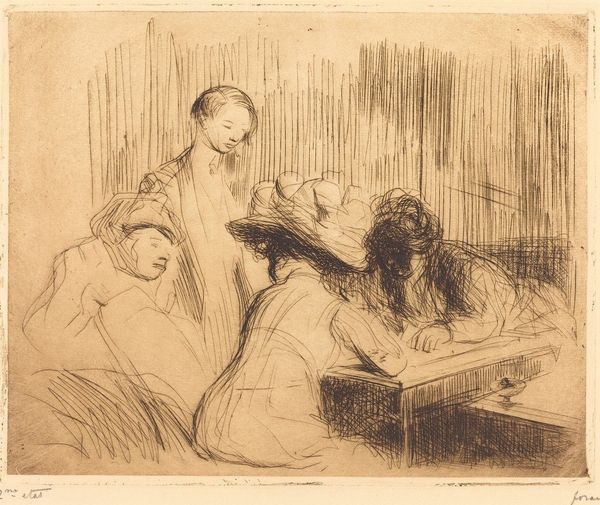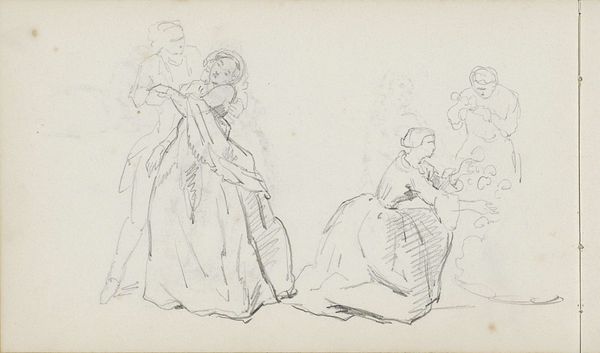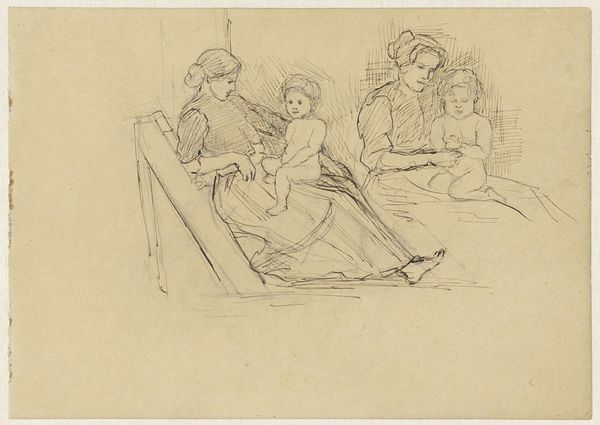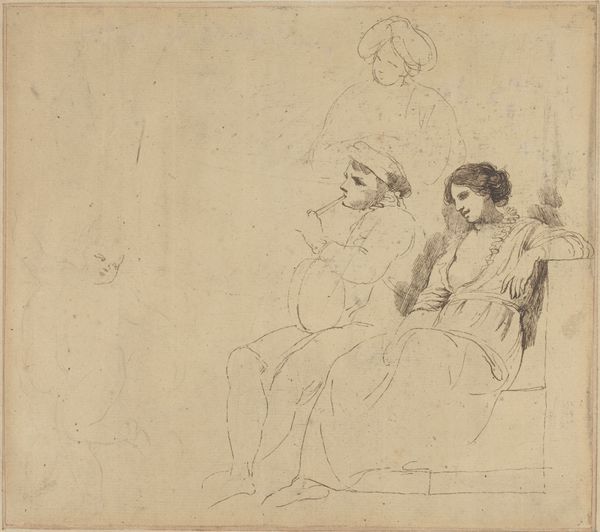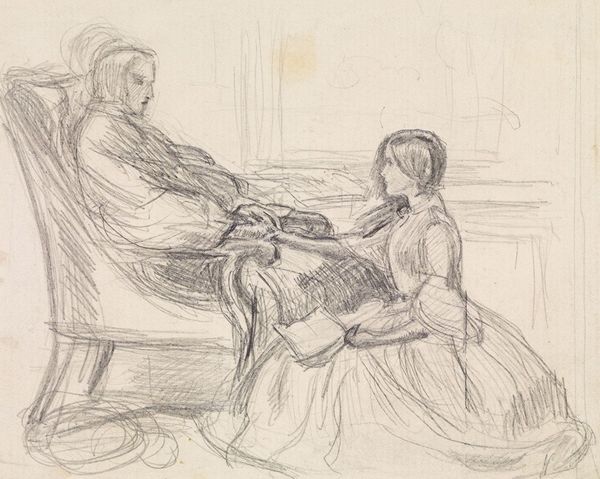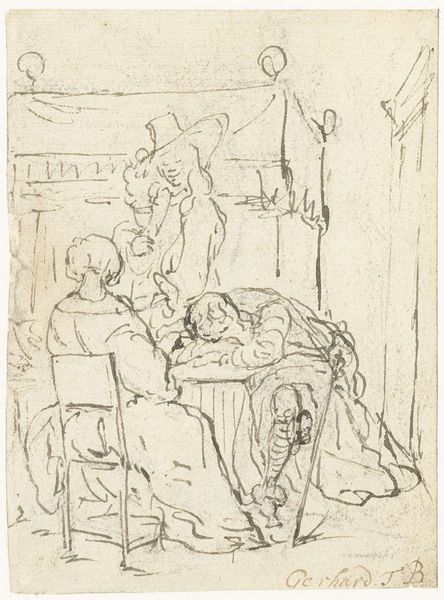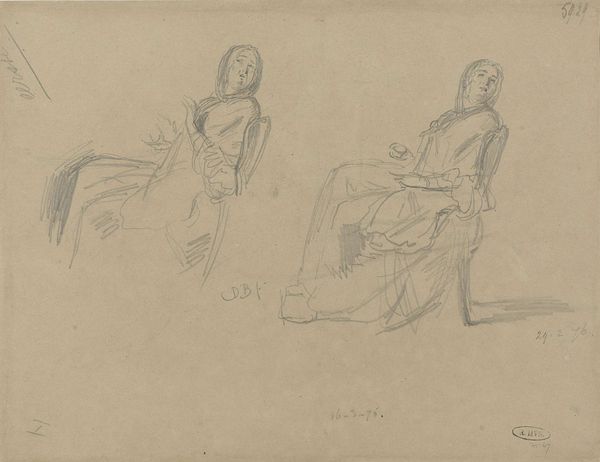
drawing, pencil
#
portrait
#
drawing
#
pencil sketch
#
figuration
#
romanticism
#
pencil
#
genre-painting
Copyright: Rijks Museum: Open Domain
Curator: Here we have a drawing entitled "Vrouw op ziekenbezoek", or "Woman on a Sick Visit," created by Charles Rochussen, likely sometime between 1840 and 1860. It’s a pencil sketch. Editor: It feels remarkably intimate for a genre scene. The sketchiness almost gives it a sense of immediacy, like a fleeting observation. There’s a real softness to the figures. Curator: Rochussen was working during a period of increasing social awareness. How does that social consciousness inform this artwork, depicting a woman tending to the sick? This evokes themes of charity and social responsibility during that era, specifically how class differences and caregiving intersected. Editor: Absolutely, that compassion is palpable, but let’s not overlook the powerful imagery at play. Note the classical poses, reminiscent of pietas or visitation scenes – imbuing everyday suffering with a sacred aura. Consider how sickness was visualized across time; we see those motifs here. Curator: Right, we must acknowledge how social status plays into this representation. Was this seen as charitable work that elevated the caregiver’s social standing? Or, as someone from within that community merely extending care to one of her peers? How do their social roles affect their expressions and interactions within the sketch? Editor: The poses carry loaded symbols. The seated woman, seemingly resigned, recalls representations of melancholy or exhaustion—common tropes used to visually communicate sickness or hardship in art. Consider the woman sitting almost like an infant, huddled up, seeking comfort in their unwell state. Curator: It forces us to reconsider notions of “illness” as it intersects with social structures, and gender roles during Rochussen's era, especially the unpaid labor often imposed on women in the home. Were they truly seen and cared for themselves? Or are these visitations more performances for the patriarchy to be seen to do “good”? Editor: By exploring those visual and cultural cues, we see that even a seemingly straightforward genre scene becomes an intricate visual document loaded with meanings extending far beyond the surface narrative. Curator: This exploration reveals the crucial roles these women inhabit both through action and gesture in the 19th century. Editor: Exactly, a powerful case study illustrating how cultural anxieties get encoded within commonplace depictions.
Comments
No comments
Be the first to comment and join the conversation on the ultimate creative platform.
